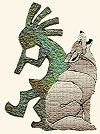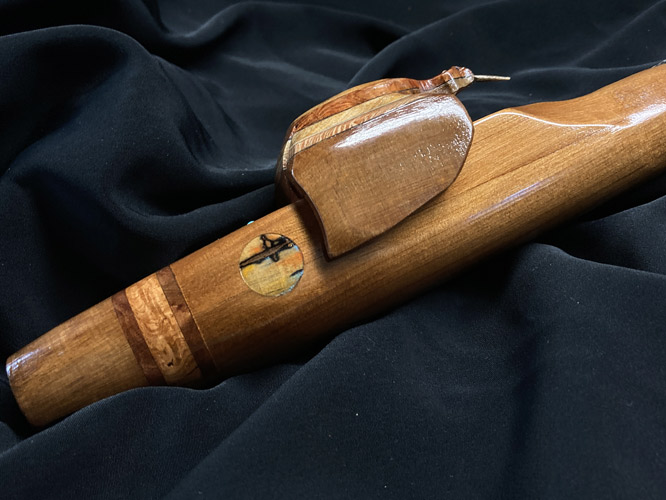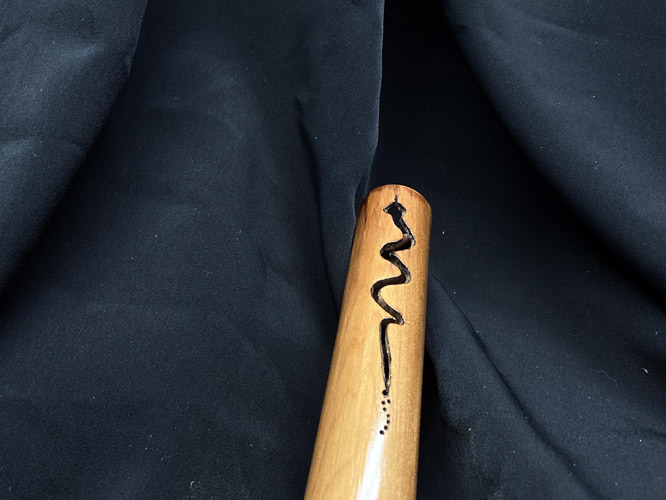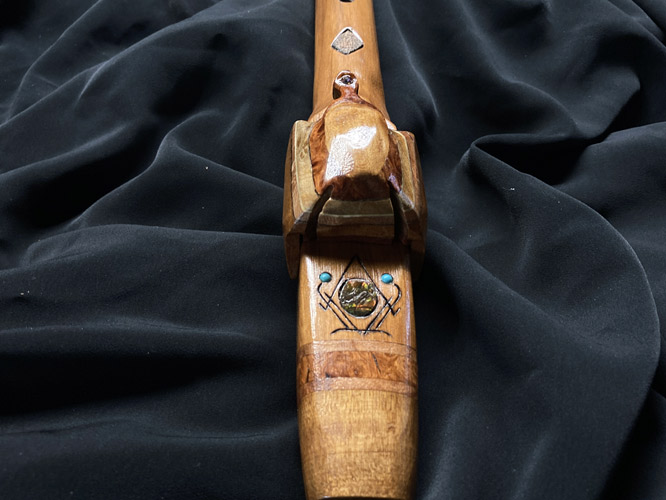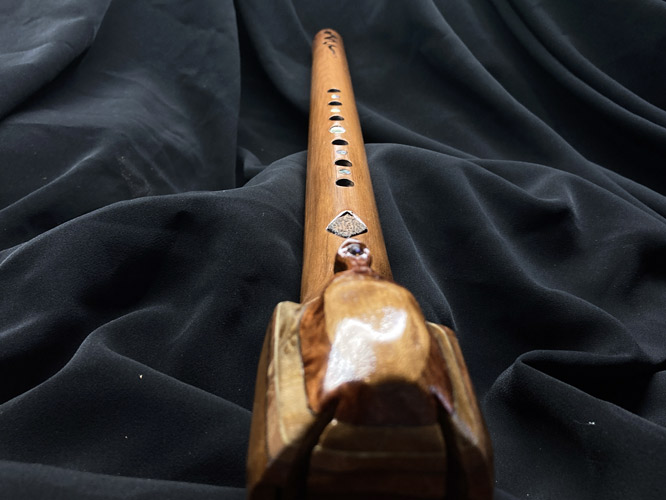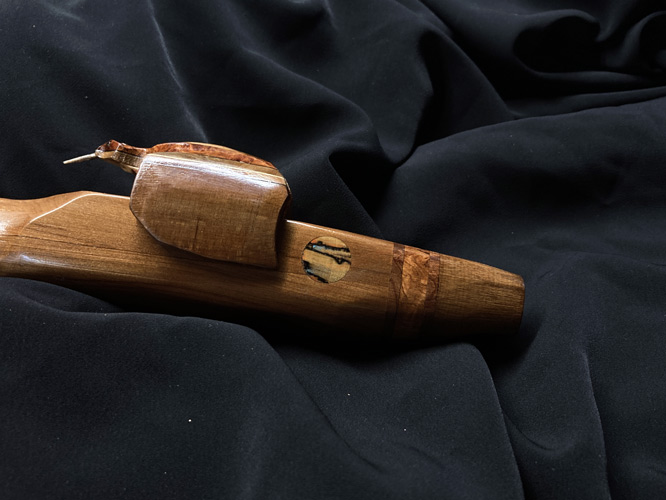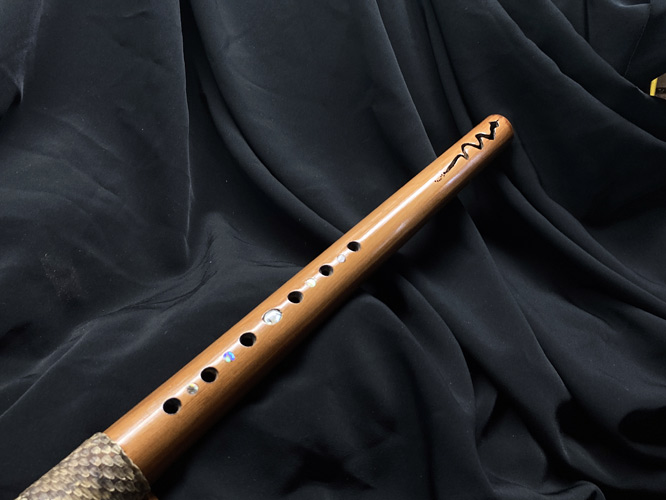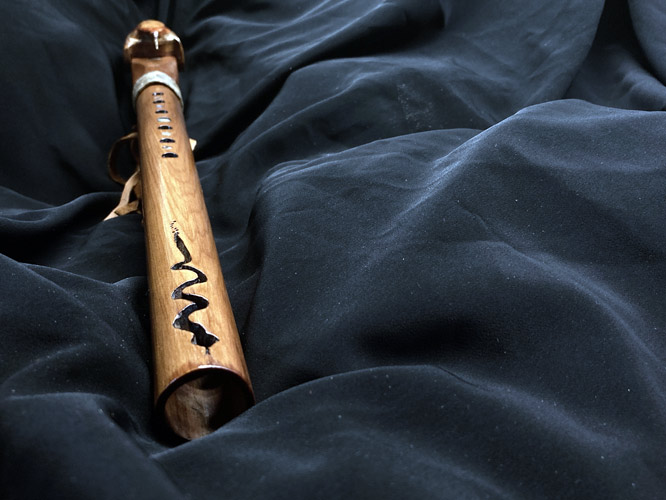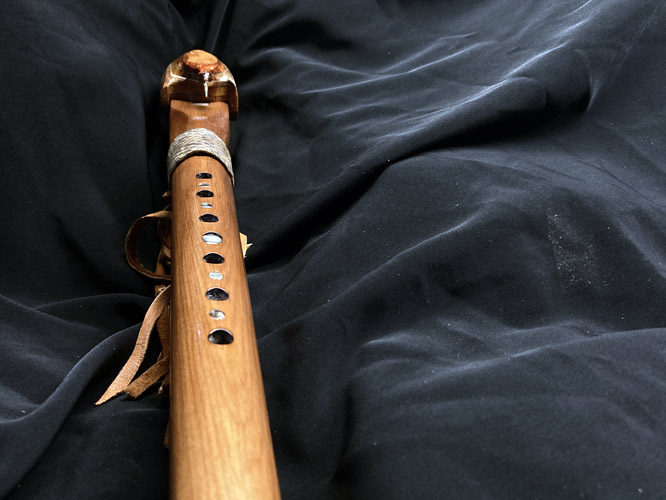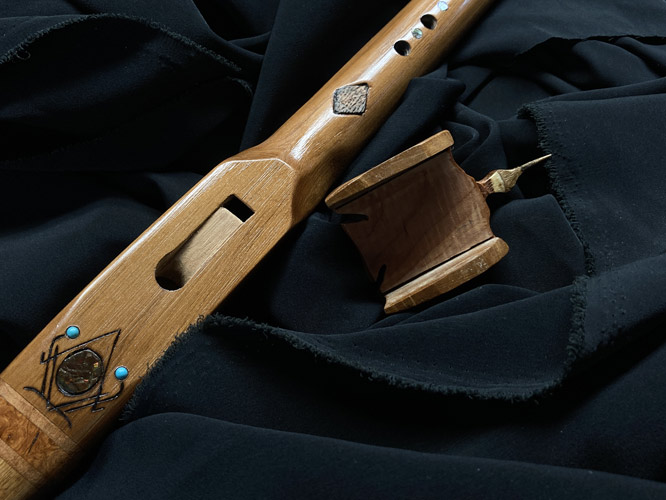$605.00
FREE DOMESTIC SHIPPING
Ancient Kauri Gm
1 in stock
I decided to challenge myself a little more with this instrument. First, a couple words about some of the materials. Wood, KAURI, is native to New Zealand, and 50,000 or so years ago, this tree fell over, into a bog, where the cellular voids amberized during the total preservation process. It’s my favorite tone wood. AMMOLITE is the occasionally iridescent underbelly of a crustacean (Ammonite) that lived between 70-130 million years ago. Specifically, this is Bear Paw ammolite, from Alberta CN. It lived in the shallows on the East side of the Rocky Mountains at a time when an inland sea extended from the Arctic Circle to present day New Mexico. The Velociraptor, or RAPTOR, is the original bird from Hell, and the egg shell set to the sound chamber, is 70-85 million years old.
Woods used in construction, beginning at the mouthpiece, include SE Asian amboyna burl between layers of redwood burl, and capped with the kauri. Each side of the compression chamber is then inset with a subtly hand colorized 16mm disk of black and white African ebony. The fetish block is a compression fit piece; no ties are required. It took as long to build as the flute. It begins with a base of kauri, and an underlayment of Oklahoma red cedar for moisture control. It is then built up with overlays of abalone, mesquite, mappa burl, redwood burl, additional abalone, amboyna burl, and more kauri. Unfortunately, the abalone totally disappeared during the subsequent shaping…..but it’s there….Since these blocks are occasionally mistaken for turtles, I created a little beak…….from a toothpick. I also canted the wings such that when you gently set the block down, it will not fall onto its beak. If you want a turtle, just get rid of the toothpick. More on the block later…
Inlay, again from the mouthpiece includes a 12x14mm ammolite cab, flanked by 4mm turquoise dots. While the sound chamber is set with a 16x22mm diamond cut raptor egg shell, the finger holes are accented with four 4.8mm abalone dots and an 8x10mm quartz capped abalone cab. Lastly, the fetish has a 3.6mm Brazilian faceted azotic topaz set to the crown, and I’m guessing the size here, 1mm faceted African cognac diamonds set as eyes. Like trying to corral a couple of fleas.
The flute is 22-3/8” in length with a 7/8” bore diameter. It was tuned at a wood temp of 77.1°F, ambient temp of 72.0°F, humidity factor of 65%, at sea level.
An additional challenge was to create an instrument originally tuned to Fm, and take it a full step up to Gm, WITHOUT chopping 2” off the end of the flute. I attempted to do so by creating a 3” serpent tuning hole at the Southern end of the instrument…..and it almost worked. I still had to add an additional small hole to the underside to bring it to the fundamental of Gm, otherwise the serpent would have looked like a fire hose. Since the flute has this tuning hole, AND a slide off wrap of S. Dakota prairie rattlesnake skin….UNDER NO CIRCUMSTANCE SHOULD YOU EVER TAKE THIS INSTRUMENT TO A NATIVE AMERICAN GATHERING, EVER. The snake is extremely powerful medicine, particularly to woodland tribes, and would be seen as an extremely offensive gesture if brought into their midst.
THE COMPRESSION FIT BLOCK
Each is different, and specifically fitted to its flute. It is important to install it, and remove it exactly as designed. The approach for this block, is from the front. Starting at the true sound hole (the square hole) and BACKING UP THE BLOCK, LIKE YOU WOULD BACK A CAR INTO A PARKING SPACE. If the flute is facing to the right, place the thumb and index finger of the left hand, just forward of the 16mm ebony disks on each side of the compression chamber. Gently slide the block backwards into place with the right hand, using the left hand fingers as a stop for excessive travel. It should seat itself perfectly about 1/32nd of an inch behind the square hole. To thereafter remove the block, reverse the process, and begin nudging the back of the block wings with the left hand index finger and thumb. It will then slide forward, and off of the flute. The process should become second nature in no time. When setting the block aside, to dry out, I sanded flat spots on the underside of the wings, such that it will remain upright, and not fall on it’s low tech toothpick beak. Enjoy.
1 in stock
